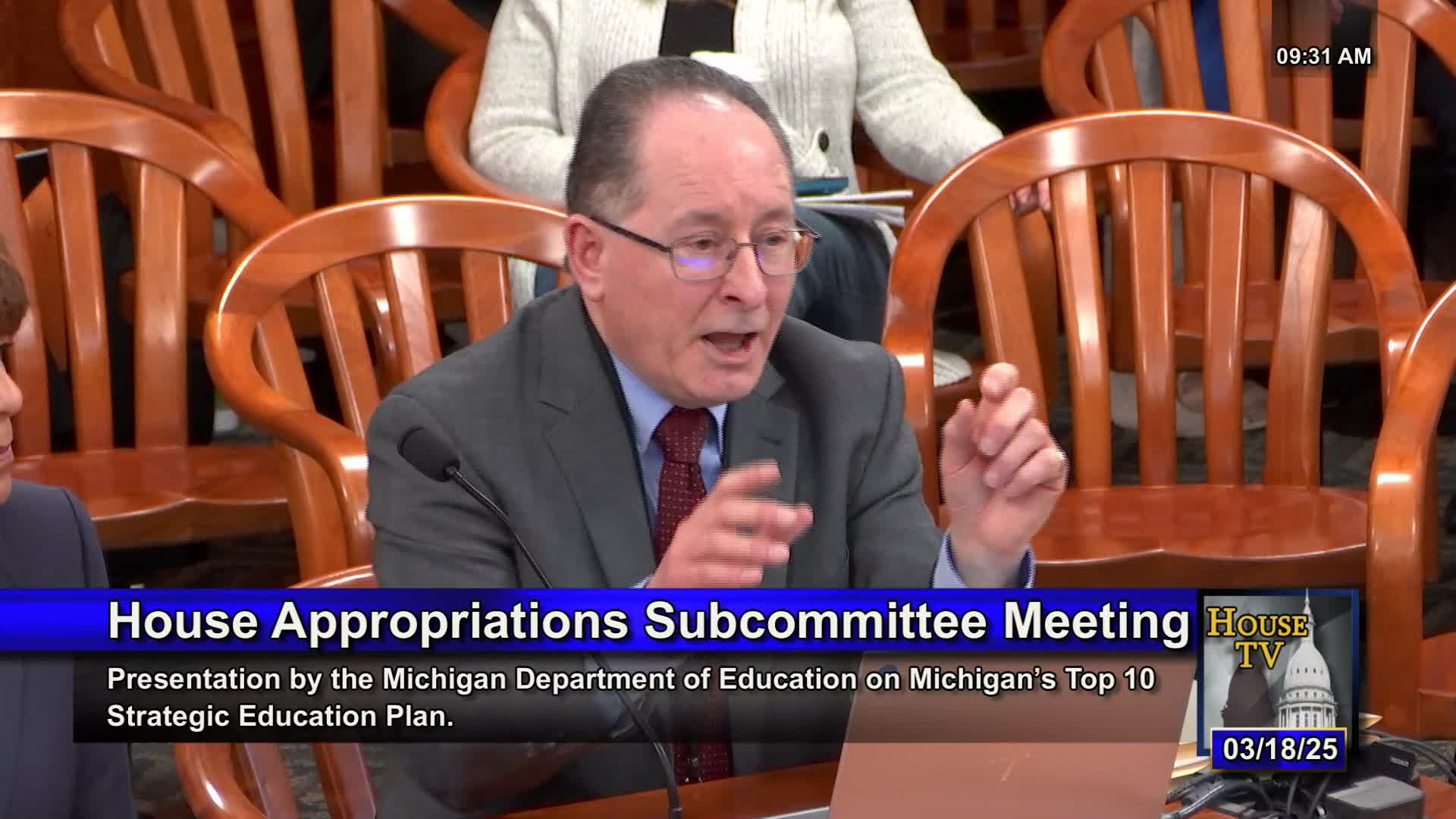Michigan improves early literacy with new laws and educator training programs
March 18, 2025 | School Aid and Education, Appropriations Sub-Committees, House of Representative, Committees , Legislative, Michigan
Thanks to Scribe from Workplace AI , all articles about Michigan are free for you to enjoy throughout 2025!

This article was created by AI using a video recording of the meeting. It summarizes the key points discussed, but for full details and context, please refer to the video of the full meeting. Link to Full Meeting
In the spring of 2024, Michigan students demonstrated proficiency gains in 15 out of 20 state tests, with notable improvements in math, science, and social studies. However, results in English Language Arts revealed a mixed performance, with proficiency rates declining in grades 3, 4, and 11. Only 40% of third graders met proficiency standards, highlighting the need for continued focus on literacy.
To address these challenges, the state has enacted new legislation aimed at improving early literacy achievement. The recently passed laws, PA 146 and PA 147 of 2024, require school districts to implement approved dyslexia screening tools and high-quality literacy instructional materials by the 2027-2028 school year. These laws also mandate intervention strategies for students identified with dyslexia and enhance training for educators.
Over the past three and a half years, the state has invested $34 million in LETRS training, which has already benefited 3,600 educators, with an additional 6,400 currently in training. This professional development focuses on essential literacy skills such as phonics and comprehension, accredited by the International Dyslexia Association.
Education officials are advocating for the mandatory implementation of this training for all K-5 teachers, similar to successful initiatives in states like Mississippi and North Carolina. They also recommend doubling the fiscal year 2025 budget allocation of $87 million for high-quality early literacy materials to further support local school districts.
The meeting underscored the importance of narrowing the focus on literacy and considering additional strategies, such as reducing class sizes in high-poverty K-3 classrooms, to ensure that all students have the opportunity to succeed in their literacy development. As Michigan moves forward, the emphasis on early literacy remains a critical priority for the state's educational future.
Converted from Appropriations - School Aid and Department of Education Tuesday, March 18, 2025 meeting on March 18, 2025
Link to Full Meeting
Comments
View full meeting
This article is based on a recent meeting—watch the full video and explore the complete transcript for deeper insights into the discussion.
View full meeting